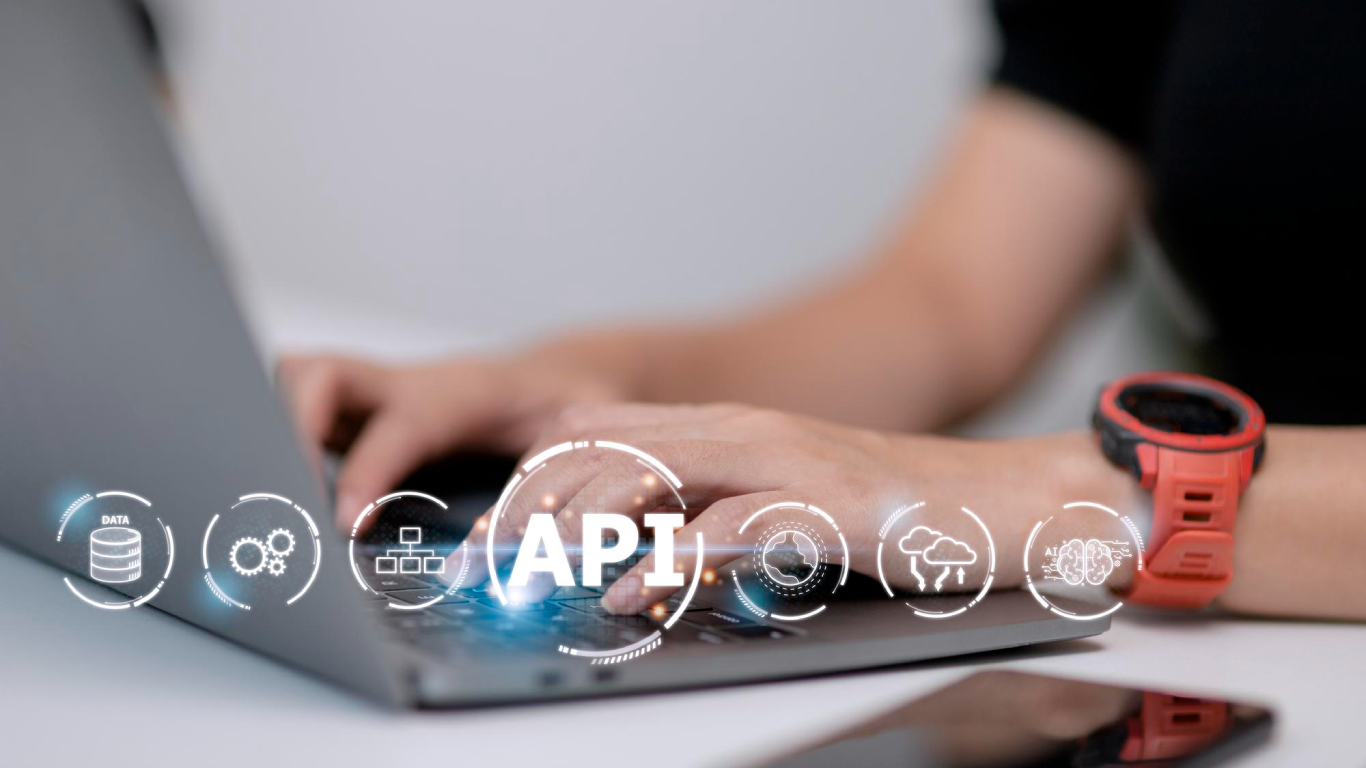Integrating AI Features into Flutter E-Commerce Apps
- Anurag Pandey
- Last updated on April 17, 2025
- Android, Artificial intelligence, eCommerce, iOS, Mobile Apps
- 9 minutes read
Table of Contents
ToggleThe e-commerce industry is growing rapidly, driven by new technology and rising customer expectations. Shoppers now want highly personalized websites and mobile apps that offer smooth and hassle-free shopping experiences.
With mobile apps becoming more popular than websites, e-commerce store owners are shifting their focus to app development.
But with so many options available, you might wonder: Which platform is the best for building a mobile app?
Here’s the answer: Flutter. Google’s open-source UI toolkit is a top choice for developing e-commerce mobile apps.
It allows you to create mobile apps that feel like native ones on both Android and iOS using a single codebase.
Flutter also makes AI integration in Flutter e-commerce applications easy, enabling advanced features like personalized recommendations, chatbots, and more.
So, how can you add AI features to your ecommerce Flutter mobile app?
This blog will guide you through the process.
We will cover the key AI features, how to implement them, the best AI tools for Flutter development, and solutions to common challenges of AI implementation in e-commerce.
Let’s get started!
Key AI Features to Integrate
First, it is important to understand which AI features you should integrate into your ecommerce mobile app to increase its functionality and user experience.
Here are some key features to consider for AI integration in Flutter e-commerce applications:
1. Personalized Recommendations:
Personalized recommendations are a cornerstone of modern ecommerce mobile apps, offering a personalized shopping experience using AI.
By analyzing user behavior, purchase history, and preferences, AI can suggest relevant products to users, increasing conversion rates and customer satisfaction.
In Flutter, this can be achieved by integrating pre-trained AI models or APIs like Hugging Face to analyze user data and offer custom suggestions in real time.
If you are a Shopify merchant looking to offer personalized product recommendations, you can integrate the best Shopify product recommendation apps to increase your e-commerce store experience.

2. Image Recognition and Visual Search:
Most users now expect features like visual search, inspired by the rise of image-driven platforms such as Instagram and Pinterest.
With image recognition in Flutter e-commerce mobile apps, users can upload or capture a photo of an item and quickly find similar products, increasing their shopping experience.
By integrating image recognition and visual search into your Flutter e-commerce mobile app, you can use Firebase ML Kit—one of the best AI tools for Flutter development—to implement on-device image recognition.
Flutter’s plugins, such as those for camera integration, make it simple to add this functionality, ensuring a smooth and intuitive visual search experience for your customers.

3. AI-Powered Chatbots
Customers often have questions or concerns, and addressing them in real-time is key to building trust in your e-commerce mobile app. This trust can turn users into loyal, returning customers.
AI-powered chatbots for mobile shopping are an essential feature for providing 24/7 support.
These artificial intelligence chatbots can handle customer queries, assist with product selection, and resolve issues instantly, creating an easy shopping experience.
Over time, they improve their responses and efficiency through machine learning, making them even more reliable.
For Flutter app development with AI capabilities, you can integrate Dialogflow, OpenAI and Gemini.
It works smoothly with Flutter to implement chatbots that understand natural language, deliver human-like interactions, and increase the overall user experience.

4. Voice Search
Voice search has become an essential feature for modern ecommerce mobile apps, especially with the growing use of voice-enabled devices like smartphones, smart speakers, and virtual assistants (e.g., Alexa and Google Assistant).
It offers a hands-free and easy way for users to interact with mobile apps, increasing both accessibility and convenience.
Integrating voice search functionality in Flutter apps can make your ecommerce platform more user-friendly and efficient.
You can use tools like Google’s Speech-to-Text API—one of the best AI tools for Flutter development—can help you implement accurate and reliable voice search capabilities, ensuring a smooth experience for your customers.
As artificial intelligence technology advances, voice search is evolving into more sophisticated voice assistants. These assistants can recommend products, provide personalized shopping advice, and even complete transactions, revolutionizing how users engage with ecommerce platforms.

5. Dynamic Pricing and Insights
Dynamic pricing strategies in ecommerce mobile apps allow businesses to adjust product prices in real-time using AI.
By analyzing customer demand, competition, and inventory levels, this approach maximizes revenue while maintaining market competitiveness.
AI also provides actionable insights into customer behavior, sales trends, and inventory management, enabling data-driven decisions such as personalized discounts or better stock planning.
With AI integration in Flutter e-commerce mobile applications, implementing dynamic pricing is easy. You can use tools like Firebase ML Kit can analyze data efficiently, while Flutter ensures smooth real-time updates across platforms.
These intelligent strategies help businesses increase revenue, and customer loyalty with Shopify loyalty and rewards apps, and stay competitive.

💡 Related Read: Check out our blog on the Top 9 Mobile App Development Trends in 2025 to stay updated with the latest trends!
Steps to Integrate AI in Flutter E-Commerce Mobile Apps
1. Choose the Right AI Tools
Selecting the appropriate AI tools and libraries is critical for a successful integration.
The following factors to consider include:
- App requirements (e.g., image recognition, voice search, Chatbot)
- Resource constraints
- Scalability
Some of the popular options include TensorFlow Lite for on-device machine learning, Firebase ML Kit for pre-trained models, and OpenAI APIs for advanced AI functionalities.
2. Set Up the Backend
AI functionalities often require robust backend support to manage data, train models, and handle requests.
You must consider the following:
- Use Python-based frameworks like TensorFlow or PyTorch for AI model development.
- Deploy APIs with Flask or Django for easy integration with Flutter.
- For cloud-based solutions, use platforms like AWS AI, Google Cloud AI, or Azure AI.
3. Integrate AI Models in Flutter
Flutter’s plugin system and API support make it straightforward to integrate AI models.
Here is how you can integrate:
- Use pre-built Flutter plugins like firebase_ml or image_picker to add AI functionalities.
- For custom models, export them to TensorFlow Lite format and load them into the Flutter app using the tflite_flutter plugin.
- Implement RESTful APIs for real-time AI predictions.
4. Optimize for Performance
To ensure a smooth user experience, optimize your Flutter app by:
- Using lightweight, optimized artificial intelligence models for mobile environments.
- Offloading complex computations to cloud services when necessary.
- Regularly updating models to maintain accuracy and relevance.

💡 Related Read: If you’re looking for the best mobile app development framework for your needs, don’t miss our blog, “6 Mobile App Development Frameworks for 2025!”
Popular AI Tools and Libraries for Flutter Development
Below is the table to help you select the best AI tools for Flutter development:
| Tool/Library | Description | Key Features | Best Use Cases |
| ML Kit by Firebase | A mobile SDK that provides ready-to-use machine learning solutions. | – Pre-trained models for common tasks – On-device and cloud-based processing | – Text recognition – Face detection – Image labeling |
| Dialogflow | A conversational AI platform for building chatbots and virtual assistants. | – Natural language understanding – Multilingual support | – AI-powered chatbots – Customer service automation – Voice-enabled search |
| OpenAI APIs | A suite of APIs for advanced AI capabilities, including natural language processing and image creation. | – Conversational AI – Content generation – DALL·E for image generation | – Smart chatbots – Automated content creation – Dynamic and personalized user interactions |
Challenges and Solutions
When developing a Flutter mobile app, developers or business owners may face various hurdles.
The challenges of AI implementation in ecommerce are no exception, particularly when integrating advanced features into Flutter apps.
Despite the immense potential of AI, Below is a closer look at the obstacles you might face and effective ways to address them:
Challenge 01: High Latency in AI Operations
Latency occurs when AI features, especially those requiring real-time computation, take too long to process. This can lead to a poor user experience and frustration.
Solution:
- On-Device AI Models: Use lightweight models like Hugging Face to perform computations on the user’s device, minimizing reliance on server responses.
- Edge Computing: Deploy AI functionalities closer to the user’s location via edge servers to reduce network delays.
- Caching and Preloading: Cache frequently accessed data or pre-process recommendations to reduce waiting times during user interactions.
- Optimize Code: Refactor and optimize AI-related code to minimize processing overhead.
Challenge 02: Ensuring Data Privacy
AI features often depend on sensitive user data, including browsing history, purchase patterns, and even voice or image inputs.
Mishandling this data can lead to legal issues, loss of trust, and reputational damage.
Solution
- Data Anonymization: Strip personally identifiable information (PII) from data before processing it.
- Encryption: Encrypt user data both in transit and at rest to protect it from unauthorized access.
- Compliance with Regulations: Ensure adherence to data protection laws like GDPR (General Data Protection Regulation) and CCPA (California Consumer Privacy Act).
- Consent Management: Provide transparent data collection policies and obtain explicit user consent for AI features.
- Local Processing: Wherever possible, perform AI computations locally on the user’s device rather than sending data to the cloud.
Challenge 03: Cost of Implementation
Integrating AI features can be expensive, particularly for startups or small businesses with limited budgets.
Costs can arise from developing models, accessing cloud services, and hiring specialized talent.
Solution:
- Using Pre-Trained Models: Use pre-built solutions from platforms like TensorFlow Lite, Firebase ML Kit, or Dialogflow to reduce mobile app development time and costs.
- Open-Source Tools: Explore open-source AI frameworks and libraries to remove licensing fees.
- Cloud-Based AI Services: Many cloud providers offer pay-as-you-go pricing models, allowing businesses to scale costs according to their needs.Examples include AWS AI, Google Cloud AI, and Azure Cognitive Services.
- Focus on High-Impact Features: Start with a few key AI functionalities that deliver maximum value to the Flutter app and expand incrementally as resources permit.

💡 Related Read: Facing challenges with cross-platform mobile app development? Read our blog, “How to Overcome Cross-Platform Mobile App Development Challenges,” for practical tips and solutions!
Conclusion
Integrating AI features into Flutter-based e-commerce mobile apps is a game-changer for increasing functionality, improving user experiences, and driving business growth. From personalized recommendations to dynamic pricing and chatbots, AI integration in Flutter e-commerce mobile applications unlocks endless possibilities for innovation and growth.
Flutter’s flexibility and performance make it the perfect framework for Flutter app development with AI capabilities.
At ControlF5, we specialize in building custom e-commerce mobile apps with advanced AI features while also focusing on optimizing Flutter apps for AI performance.
Our experienced team has successfully delivered multiple projects on Upwork and Clutch, helping businesses create intelligent, user-centric apps.
You can hire a flutter app development company to turn your vision into reality and lead the smart, AI-driven future of e-commerce.
Anurag Pandey
I’m Anurag Pandey, Founder & CEO of ControlF5, with 17+ years of experience in building eCommerce solutions, web design, and mobile applications. I specialize in WordPress website design, Shopify store development, and scalable mobile apps based on growing digital brands. My work merges performance-focused UI/UX with advanced integrations, delivering optimized, conversion-ready solutions. At ControlF5, we help eCommerce businesses scale through custom storefronts, mobile-first design, and smooth technology adoption—whether on Shopify, WooCommerce, or native mobile apps. My passion is helping eCommerce brands turn digital ideas into high-performing, user-centric products.
Recent Posts
Categories
Artificial intelligence, ChatGPT, Awards, Case Studies, CSS, eCommerce, Events, Go High Level, How To Guide, HTML, IT Augmentation Service, MERN Developer, Mobile Apps, Android, iOS, MVP, React Js, Remote Developers, SaaS, Shopify, Shopify Apps, Shopify Plus, Uncategorised, Website Design, Woocommerce, WordPress
Hire Developers
About us
ControlF5 has become a leading Web Design and Mobile app Development company in India since 2012, and has a renowned name in the industry.
Popular Posts
Tags
AI
App Development
Artificial Intelligence
b2b ecommerce solution provider
best ecommerce platform
best ecommerce website builder
best ecommerce website builder Shopify
best Shopify apps
Business Growth
ControlF5
E-commerce
eCommerce
eCommerce Development
ecommerce website using Shopify
Entrepreneurship
future of WordPress
GoHighLevel
Hire Remote Developers
Hire Shopify Developers
Hire Shopify Experts
Hire Wordpress Developers
Mobile App Design
Mobile App Development
SEO
set up shopify store
Shopify
shopify case studies
shopify developers
shopify development
shopify dropshipping
shopify experts
shopify plus
shopify store
shopify website builder
Technology
User Experience
web development
website
Website Design
WooCommerce
Wordpress
wordpress case studies
WordPress developers
wordpress development
wordpress experts
Related Articles
Top Mobile App Development Companies in India
Anurag Pandey
27th June 2025
The mobile app you launch today might be the reason your business grows faster tomorrow. But building a great mobile app isn’t just about coding; it’s about working with the right team.

nopCommerce vs Shopify: Which eCommerce Platform is Right for You?
Saloni Garg
18th June 2025
Feeling stuck between nopCommerce and Shopify? You are not alone, and we get it. Choosing the right eCommerce platform isn’t just about picking a popular name.

How to Migrate from WooCommerce to Shopify: A Complete Step-by-Step Guide
Saloni Garg
17th June 2025
Running your e-commerce store on WooCommerce and feeling limited by plugins, slow load e-commerce store speeds, or constant updates?










